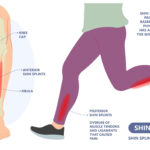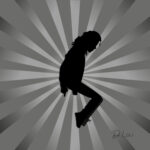Touring Musician Stress, Injury, and Illness.
“We don’t get paid for playing, we get paid for riding” The job of a touring musician is not just playing gigs. For those who don’t live the lifestyle of a moderately successful touring musician, it is hard to grasp what goes in to a “day at the office.” The physical and mental wear and tear of being on the road is real. In over 20 years of working with musicians who travel by plane, tour bus, sprinter van, even rusty Subaru with trailer, it’s work for all of them. One “A-List” musician patient of mine once told me something to the effect of “of course I’m blessed beyond belief, but I’m still not at home tonight.” Success of all types requires sacrifice. The hour or two on stage is often preceded by the sound check, and the unloading of gear, the drive to the venue, the sleep on the bus the night before, eating out for every meal, and the list of stressors goes on and on. When working with a touring musician it is critical to recognize the connection between mental, physical, and chemical stress. All types of stressors break people down slowly, and while on the...
read moreIs There A Special Doctor For Musicians?
Is There A Special Doctor For Musicians? What separates the health issues of musicians from those of “ordinary” people? Diet? No. Exercise? No. Genetics? No. As a musician, does your doctor know the difference between carpal tunnel syndrome (CTS) in secretary in a legal office, and CTS in the wrists and hands in a flautist? Do they understand what needs to change, and how? What about the difference between neck pain in a guitarist vs neck pain in a cellist? Does numbness in the face of a tuba player differ from that of a harmonica player, and how? What separates specific health issues of musicians from ordinary people are the hours of focused practice and repetition, of the mind and body. Diabetes is a lifestyle related disease that knows no boundaries. Cancer affects everyone. High blood pressure – mostly a lifestyle issue that affects everyone. Musicians have specific repetitive stress issues that often affect the nerves, muscles, joints and other moving parts of the body. PRMD’s or practice related musculoskeletal disorders are real, and may impact the musician in the short as well as long term. PRMD’s have ended tours, ended careers, or led to invasive surgeries, some of...
read moreSelf Care Tools For Musicians On A Tour Bus – Dr. Lou Jacobs
Best body work tools to take on the road. I work with a lot of musicians, their crew, and management. When you are on a tour bus for weeks on end, it can be really rough on your body. While recently working with Gary Clark Jr., it came to my attention that I should have recommendations for tools that you might use on a tour bus to help ease the aches and pains of performing and being on the road. Heating Pad Theracane Percussion Massager Formula 303 *Ball in a sock *Exercise and stretching videos with Dr. Lou Heating pads are comforting, they promote blood flow and often reduce the tension and soreness of achy muscles. They are cheap, easy to use, and very helpful when you just feel sore and tight. Your tour bus should have ample outlets to plug one in. The Theracane is a plastic cane-like tool that is used to work on knots in muscle by oneself. They are designed so that the user can put pressure on any part of the body, to loosen it up. No need for tour bus electricity for this tool, it’s old school. A percussion massager does similar work...
read moreShin Splints: What are they? How can I fix them?
Shin Splints and How to Get Rid of Them by Dr. Aaron Vela What is a shin splint? To fully understand how to get rid of shin splints, we need to understand a little bit of anatomy. The tibia is your shin bone. On the outside of bone is an important layer of tissue called the periosteum which is involved in healing bone and acting as an anchor for ligaments and tendons to attach. The periosteum also has a lot of nerve endings that feel pain. Ligaments are connections from bone to bone, while tendons are connections from muscle to bone. There are several muscles that attach to the shin bone. In the case of shin splints, usually the culprits are either the tibialis anterior muscle (if the pain is more on the front-outside of the shin) or the soleus muscle (if the pain is more on the front-inside of the shin). Shin splints are caused when the tendons from these muscles repetitively pull on the periosteum, creating inflammation and irritation to this very nerve dense tissue, creating signals of pain. The reason why the tendons irritate the periosteum usually has to do with a combination of things,...
read moreMichael Jackson. Prince. Tom Petty. Back Pain and Opioids.
Michael Jackson, Prince, and Tom Petty walk into a bar…. Michael Jackson died on June 25, 2009. Prince was found dead on April 21, 2016. Tom Petty died on October 2, 2017. Though all very different personalities, they had one common note. Their causes of death were related to dependency on pain medication, ultimately for back pain. Although Michael Jackson’s problems are reported to have started after he was severely burned while filming the infamous Pepsi commercial, his pain later in life was related to low back pain caused by a fall on stage. Or off the stage as it were. At his time of death, his house was filled with painkillers like oxycontin, demerol and diprivan. According to testimony given by friends and former doctors, Michael Jackson was severely addicted to pain killers and other forms of anesthesia. What is not well, or publicly documented is what he tried for his back that didn’t involve medications. Perhaps it was too late, and he was so addicted to the pain meds from his 3rd degree burns, that natural methods for back pain were out of the question for him. It’s sad to think he may have had other options....
read more




